Garden strawberries (large-fruited) are the most common berry crop grown by amateur gardeners. People call it strawberry. In this article, in order to avoid confusion, it is also called strawberry and we will talk about planting strawberries in open ground.
|
Garden strawberries, but summer residents more often call them strawberries |
Biological features of culture
Strawberries are an evergreen plant with a short rhizome and a small stem that becomes woody some time after planting. It forms three types of shoots: horns, mustaches and peduncles.
- Horns or rosettes are formed from vegetative buds in the lateral part of the stem. The apical bud of the horn—the “heart”—is red. The larger it is, the greater the yield the plant will produce in the first year. As the bush grows, the horns form higher and higher above the ground.
- Whiskers are long lashes with which young plants can be separated from the main bush. The most suitable for obtaining planting material are mustaches of the 1st and 2nd order.
- Peduncles are not suitable for obtaining planting material.
The peculiarity of strawberries is its constant renewal.
Requirements of strawberries to climatic factors
The berry plant is quite picky about environmental conditions.
- Temperature. Strawberries are quite winter-hardy; they can withstand temperatures down to -8-12°C without freezing. Under snow it can withstand frosts down to -35°C. Spring frosts can damage buds and flowers, but since the crop blooms extremely unevenly, the entire crop is never lost. In addition, the buds are more resistant to frost (-4-5°C) than open flowers, which can withstand temperatures down to -2°C.
- Light. The culture is photophilous, but can tolerate slight shading. It can be grown in the rows of a young garden, but under the crown of an adult tree in the dense shade the plants will produce small berries.
- Moisture. Strawberries are demanding of moisture and can tolerate short-term flooding, but do not grow on waterlogged soils. Drying out has a very bad effect on the development of culture.Not only does the yield of bushes decrease, but their growth and development also slows down.
The impact of climatic factors on strawberry productivity can be significantly weakened by proper agricultural technology.
Where is the best place to plant strawberries?
The best place to plant strawberries is in well-lit areas with a flat surface, protected from strong winds. The soil should be loose, well-cultivated, cleared of weeds, especially malicious ones (wheatgrass, bindweed, sow thistle, thistle, gooseberry). The depth of groundwater in the plot is at least 70 cm.
Lowlands where cold air accumulates are not suitable for planting strawberries. In such places, the crop ripens 8-12 days later.
Steep slopes are also unsuitable for planting, since when the snow melts, the soil is washed out and plant roots are exposed.
Strawberries can be grown on any soil, but medium loam is the most preferred. When groundwater is close, plants are cultivated on high ridges. Sandy soils are the least suitable for the crop; plants on them suffer from both low nutrient content and lack of moisture. Before planting strawberries on such lands, they are cultivated.
Predecessors of culture
It is not recommended to grow strawberries in one place for more than 4 years. It must be alternated with other crops. The best predecessors for strawberries are:
- garlic;
- greens (parsley, dill, lettuce, cilantro, basil);
- legumes;
- root vegetables (carrots, beets);
- all types of cabbage;
- turnip, radish, radish;
- bulbous flowers (tulips, daffodils), as well as marigolds.
But the best precursor is fertilized black or occupied steam.However, it is unlikely that gardeners can allow the land to sit empty for a whole season on their already not very large plots.
Bad predecessors:
- potatoes, tomatoes;
- all pumpkin plants (cucumbers, zucchini, pumpkin, melon, watermelon).
Bushes after potatoes are especially severely depressed. Strawberries do not tolerate root exudates of this crop.
How to prepare a bed for planting strawberries
The beds for planting are prepared 1-2 months in advance; the soil must settle and become stable. Strawberries love loose, fertile soils, so digging should be done as deep as possible: on weakly fertile soils 18-20 cm, on chernozems - 25-30 cm.
Strawberries do not respond well to direct application of fertilizers for planting because they do not tolerate high concentrations of salts in the soil. Therefore, they are used either under a predecessor or when preparing a bed. The applied fertilizers are embedded deeply so that they dissolve in the ground and become accessible to plants.
On loamy soils, add a bucket of completely rotted manure, peat or compost per 1 m2. In the absence of organic fertilizers, use nitroammophoska or nitrophoska (2 tablespoons/m2).
When planting strawberries on sandy soils, increased doses of manure, compost or humus are added to the beds - 2-3 buckets / m2. You can add turf soil and 3-4 kg of sawdust.
On heavy loams and clayey soils, river sand with organic fertilizers is used. Per 1 m2 add 3-4 kg of sand and 2-3 buckets of manure or compost. Fertilizers are thoroughly mixed with the soil and embedded deeply.
Strawberries grow well in neutral and slightly acidic soils (pH 5.5-7.0). If the pH is below 5.5, then liming is carried out.It is better to add dolomite or limestone flour, since their effect continues throughout the entire period of growing the crop in one place (4 years). The application rate is 3-4 kg/m2.
Lime is not applied directly to strawberries, but is applied 2-3 years before planting the plantation for previous crops. Lime can be replaced with ash; it acts much softer and contains microelements necessary for strawberry bushes. Ash is added for digging at a rate of 2-3 cups/m2.
On alkaline soils, the site is acidified. For this, peat, sawdust, and rotted pine litter (10 kg/m2) are used. Their action is soft and slow, but long lasting. If it is necessary to slightly acidify the soil, then physiologically acidic mineral fertilizers are used: ammonium sulfate, ammonium nitrate. Ash should not be added to highly alkaline soils.
Selection of strawberry seedlings
When choosing seedlings, pay special attention to the condition of the bushes. They should be fully formed with 3-5 straightened leaves. The absence of damage, spots, or wrinkles on the leaves is an indicator of the health of the seedlings.
The squat rosettes with a large pink or red central bud are considered the highest quality. The development of the strawberry bush and the first year's harvest depend on its size. With a “heart” diameter of more than 20 mm, it is possible to obtain a harvest of up to 300 g of berries in the first year. Bushes with long elongated petioles and a green “heart” will give a very small harvest in the first year or there will be no berries at all.
Choose strong, healthy specimens; weak plants will not only be less productive, but they are more susceptible to diseases and pests.If only the worst plants remain, then it is better not to take anything at all than to buy obviously problematic bushes.
If strawberry seedlings are already blooming, then select specimens with large flowers - in the future these will be large berries. You should not purchase seedlings with small flowers, and especially those that have no buds at all.
When starting a new plantation, 3-5 plants of each variety are selected in order to subsequently obtain planting material from them. The best option is to purchase 3-4 varieties of strawberries.
When purchasing seedlings with an open root system, pay special attention to the roots. They should be light, at least 5 cm long. If the roots are dark, it means the plant is weak and sick, and it may not take root after planting.
The place of the growth point (“heart”) should be thin. The thicker it is, the older the bush from which the rosette was taken. The berries on such plants are very small, and the harvest lasts only 1 year.
Planting strawberries in open ground
The strawberry plantation is being formed gradually. The most thoughtful way of growing is to place rows of plants of different ages on a plot. Every year a new bed is laid out, and the oldest strawberries are dug up. Then it will be possible to gradually replace old plants on the site with young strawberry bushes.
Planting dates, when is the best time to plant strawberries
The planting date determines the size and quality of the first harvest. The main periods for planting strawberry bushes are spring, second half of summer and autumn.
Spring planting time highly dependent on the growing region and weather conditions. In the middle zone and in Siberia it occurs in early-mid May, in the southern regions - mid-late April.The earlier the seedlings are planted, the larger the harvest will be next year. During the growing season, the bushes will grow stronger and produce a large number of flower buds.
The main disadvantage of spring planting strawberries is the lack of planting material. What is sold are either rosettes from old bushes or last year's latest tendrils. Neither one nor the other is high-quality planting material. The horns of old bushes are not young seedlings, but the same old bush, divided into rosettes. There will be no harvest from such plants, no matter how well they are cared for.
Whiskers of the 5th-8th order are the weakest on the garland and to obtain berries they must be grown within a year.
Summer planting time is the most optimal. You can determine the most favorable planting time by looking at the whiskers. When mustaches of the 1st and 2nd order appear, it is time to plant the seedlings. In the remaining time, the bushes will form a powerful root system and go into winter fully prepared. If the deadlines are met, the harvest of 1 year should be 100-150 g of berries per plant.
Autumn term (September-October) is the worst in terms of obtaining berries for the next year. The bushes will have time to take root, but will go into winter poorly prepared, not fully formed, will produce few flower buds, and the harvest will be very small (20-30 g per bush).
In addition, such plants do not tolerate winter quite well: the percentage of loss can be very high. In the northern regions, sometimes up to half of the strawberry bushes freeze.
Autumn planting of strawberries is possible only if it is necessary to obtain a large number of runners for the next year. Then in the spring, all flower stalks are removed from these plants, thereby stimulating the formation of as many tendrils as possible.In the first year, the bushes produce the most powerful tendrils, which produce the best varietal plants.
It should be borne in mind that early varieties at the optimal planting time give half the yield than middle and late ones - this is a feature of strawberries.
Treatment of seedlings before planting
Seedlings brought from a nursery are often infected with pests and diseases. To destroy pests, strawberries are heated in water at a temperature of 50°C, immersing the plant along with the entire pot in water for 15-20 minutes. The procedure is repeated twice with an interval of 30-40 minutes.
Hot water kills most pests (mites, stem nematodes, root aphids, etc.).
To prevent diseases, seedlings are completely immersed for 5-7 minutes in a solution of copper sulfate or HOM (1 teaspoon) and table salt (3 tablespoons), diluted in 10 liters of water. Then it is rinsed with water and planted.
Strawberry planting schemes
There are several strawberry planting schemes: compacted, 30×60, 40×60, 40×70.
Condensed planting. Strawberries have a very clear pattern: the denser the seedlings are planted, the higher the first harvest. For compact planting, plants of late varieties are placed according to a 20×60 cm pattern (20-25 bushes/m2).
The row spacing should not be compacted, since after the first picking of the berries, the strawberries are thinned out. If this is not done, then next year it will produce very few berries. After fruiting, every second bush is dug up and placed on a separate bed according to a 40x60 cm pattern. Compacted plantings are no longer suitable for these bushes; this pattern is only suitable for seedlings.
Seedlings of early varieties are planted at a distance of 15 cm from each other with a row spacing of 60 cm.After picking the berries, they must also be thinned out so that the gap between the bushes is 30 cm.
Planting strawberries according to the 30x60 cm pattern. Strawberries produce high yields only when the plants are free in the garden and there is no competition from other bushes (with the exception of the first year). Early varieties of strawberries are planted according to the 30x60 cm pattern.
Between varieties in the garden, a distance of 80 cm is left; it is necessary so that the whiskers do not intersect. Confusion with varieties must be avoided at all costs.
Planting according to the pattern 40x60 cm. Mid-season and late varieties are placed according to this scheme, since their bushes are more powerful, forming large rosettes.
Planting pattern 40×70 cm. This scheme is used when planting strawberries of mid-season and late varieties on highly fertile chernozem soils.
Bushes can be planted in a single-row or double-row manner.
How to plant strawberries correctly
Planting is carried out on cloudy days or in the evening, since during the daytime and in hot sunny weather the leaves evaporate a lot of water. And since the bushes have not yet taken root, and water does not flow into the leaves, the plants may wither. This negatively affects the further development of culture.
When planting flowering strawberries in spring, all flower stalks are removed, since the main thing is rooting and proper formation of the plants. The harvest of seedlings only depletes the plant, which subsequently leads to its weakening and poor wintering.
When planting plants, you should not bury or raise the “heart”, since in the first case this leads to rotting of the seedlings, and in the second - to their drying out. The “heart” should be located at soil level.
When planting strawberries, no fertilizers are used; they must be applied in advance.The roots are well straightened; they should not be allowed to twist or bend upward. If the roots are longer than 7 cm, they are shortened, but they should not be less than 5 cm.
When planting, a mound is poured into the hole, the roots are evenly distributed over it and sprinkled with damp soil. After this, the seedlings are watered abundantly. You can spill the planting holes with water and plant the bushes directly in the water, then after planting there is no watering.
Planting strawberries under black covering material
Black film or agrofibre (dark spunbond, lutarsil) with a thickness of 100 microns is used as a covering material. When using thinner material, weeds will grow through it. It is spread on the bed in a continuous layer 1-1.2 m wide.
The material is secured along the edges by pressing it to the ground with bricks, boards or sprinkling with earth. Then cross-shaped slits are made on its surface, in which holes are dug and seedlings are planted in them. The slots are made after laying the material on the bed. The bushes are pressed tightly, otherwise the mustache will grow and take root under the film. There is no need to be afraid that the plants will be cramped; the film and agrofibre can stretch.
The ridges are made high and slightly sloping so that water drains and enters the ground along the edges. For the winter, the covering material is removed, since in winter the plants under it are damped out (especially under the film). It is better to grow strawberries using a single-row method under covering material.
The advantages of this planting method:
- a significant increase in yield, since the black surface heats up more strongly in the sun, the soil warms up faster and deeper;
- berries are practically not affected by gray rot;
- weed growth is suppressed;
- less labor-intensive growing process.
Flaws:
- Uniform watering of the bushes is almost impossible.Watering plants at the roots is also very difficult because the slots are small and it is difficult for enough water to get into them;
- the film does not allow air to pass through, causing the roots to rot;
- weeds are actively growing through strawberry bushes;
- too expensive growing method
When growing strawberries under agrofibre or film, it is necessary to install an irrigation system. This is economically justified only on large farms. On individual garden plots this is too labor-intensive and costly.
The optimal lifespan of a plantation is 4 years. Then the yields sharply decrease, the berries become small and sour, and the need arises to renew the strawberry plantings.
Video about the rules for planting garden strawberries:
Other useful articles on growing strawberries:
- Strawberry care. The article describes in detail how to care for a strawberry plantation from early spring to late autumn.
- Strawberry pests. What pests can threaten your plantation and how to effectively combat them.
- Strawberry diseases. Treatment of plants with chemicals and folk remedies.
- Strawberry propagation. How to propagate strawberry bushes yourself and what mistakes gardeners most often make.
- Growing strawberries from seeds. Is it worth it for ordinary summer residents to do this?
- The best varieties of strawberries with photos and descriptions. A selection of the newest, most productive and promising varieties.
- Growing strawberries in a greenhouse. Growing technology and all the pros and cons of this matter.
- Features of growing large-fruited strawberries
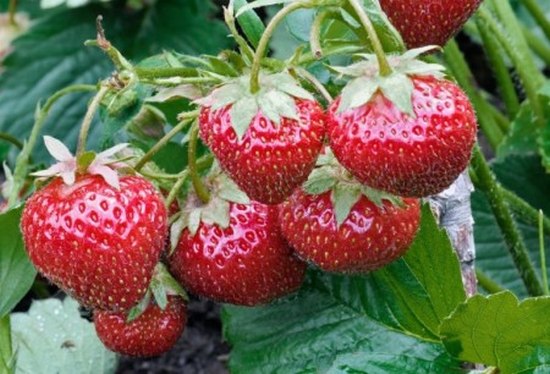
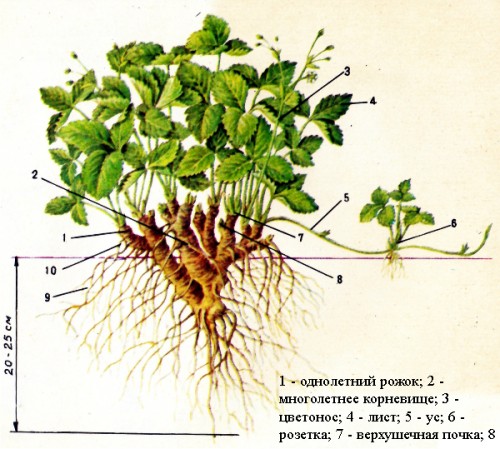
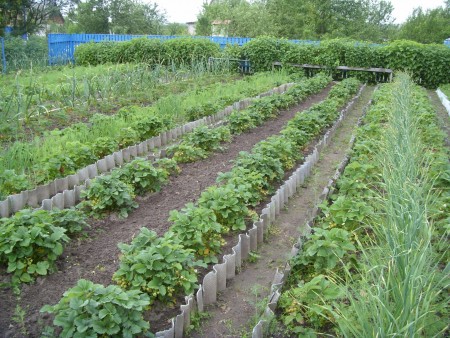
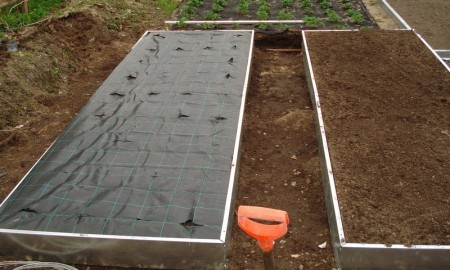
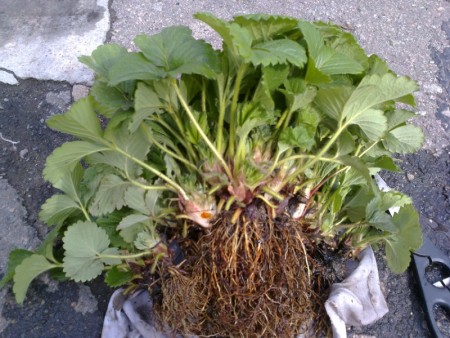

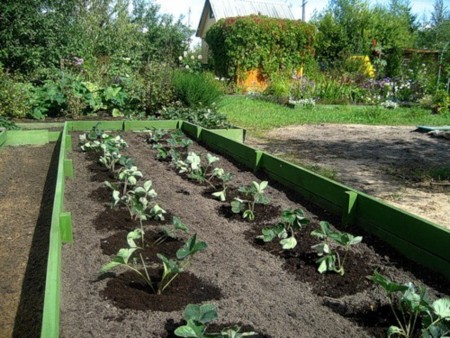
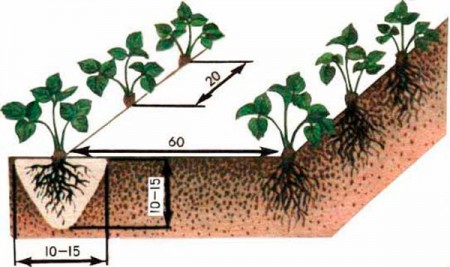
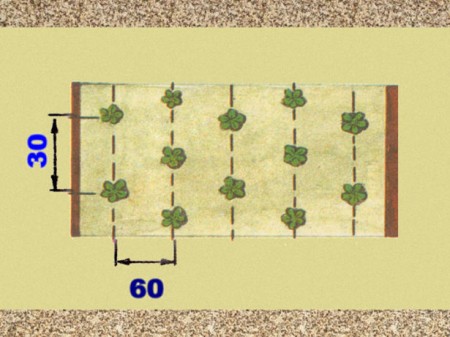
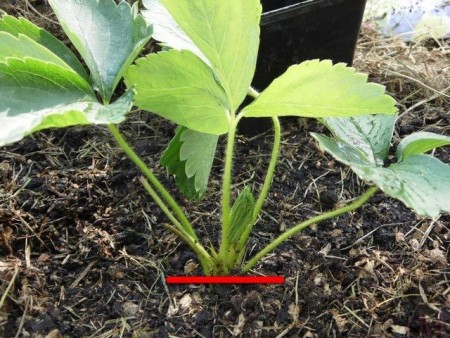
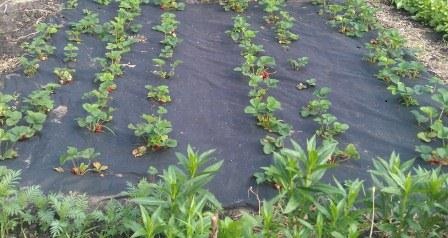

 (8 ratings, average: 4,88 out of 5)
(8 ratings, average: 4,88 out of 5) CUCUMBERS NEVER GET SICK, I'VE BEEN USING ONLY THIS FOR 40 YEARS! I SHARE A SECRET WITH YOU, CUCUMBERS ARE LIKE THE PICTURE!
CUCUMBERS NEVER GET SICK, I'VE BEEN USING ONLY THIS FOR 40 YEARS! I SHARE A SECRET WITH YOU, CUCUMBERS ARE LIKE THE PICTURE! You can dig a bucket of potatoes from each bush. Do you think these are fairy tales? Watch the video
You can dig a bucket of potatoes from each bush. Do you think these are fairy tales? Watch the video
 How our fellow gardeners work in Korea. There is a lot to learn and just fun to watch.
How our fellow gardeners work in Korea. There is a lot to learn and just fun to watch. Eye trainer. The author claims that with daily viewing, vision is restored. They don't charge money for views.
Eye trainer. The author claims that with daily viewing, vision is restored. They don't charge money for views. A 3-ingredient cake recipe in 30 minutes is better than Napoleon. Simple and very tasty.
A 3-ingredient cake recipe in 30 minutes is better than Napoleon. Simple and very tasty. Therapeutic exercises for cervical osteochondrosis. A complete set of exercises.
Therapeutic exercises for cervical osteochondrosis. A complete set of exercises. Which indoor plants match your zodiac sign?
Which indoor plants match your zodiac sign? What about them? Excursion to German dachas.
What about them? Excursion to German dachas.
Thanks, great article! I accepted it as instructions. Everything is very detailed and clear.